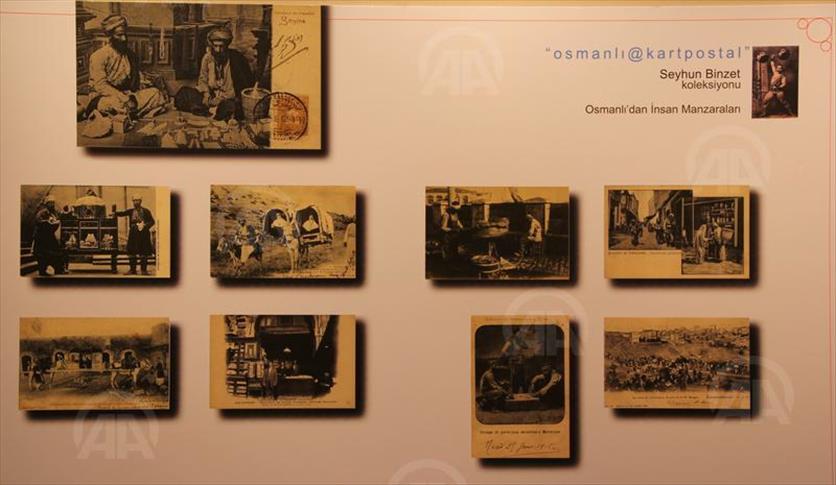
By Ayse Humeyra Atilgan
ISTANBUL
Istanbul has always been a metropolis where different religious and ethnic communities live together. This diversity can clearly be seen on the postcards of a Turkish collector Seyhun Binzet, whose collection spans over half a century.
Binzet, a chemical engineer and a keen postcard collector, has a stock of over ten thousand postcards which he has collected since 1969. "Wherever I went both in Turkey and abroad, I tried hard to find postcards that belonged to the Ottomans," he tells the Anadolu Agency (AA).
"I began keeping them as a hobby, now I have 12,000 cards which I keep at home, and I still remember those days when I went to look for postcards," he said.
Binzet exhibited some of his collection at Schneidertempel Art Center, located in one of Istanbul's multi-cultural districts of Galata with the theme "Ottomans@postcards". The art center itself, which he said was previously a synagogue, proves the diversity and tolerance of Istanbul.
"With this exhibition, I intended to show Istanbul's multi-cultural structure during the Ottoman times," he says.
"The collection here brings to life the Istanbul of more than 100 years ago. Visitors to the exhibition can see Istanbul's historic district of Beyoglu with Turkish, French, and Greek flags in the same picture, as well as Istanbul's tradesman during the Ottoman period, students, women, sportsmen, fishermen, Easter celebrations in Samsun and Canakkale provinces, mussel sellers and even octopus sellers."
Stating that the postcards were used mainly as a means of correspondence during the Ottoman period, Binzet says, "They represent the media at the beginning of 1800s."
Pointing to one of his favourite postcards, Binzet tells the story in the picture. "Here you can see the Ottoman soldiers who are setting out to go to war. The army is such that it has an imam, a priest, and a rabbi who are motivating the soldiers and praying for them. The frame tells much about the Ottomans, and it is not easy to find a picture like this anywhere in the world."
Communication by postcards dates back to the 19th century. Intended to be written and sent without an envelope. This form of mail rapidly found extensive use all around the world. It both proved convenient for the sender and the postal services responsible for their handling, in addition to facilitating state institutions inspecting the content of the the communication between people.
"The reason lying behind the common usage of postcards is the censorship practised during those days," Binzet says.
"As almost all the letters faced censorship and people felt uneasy about sending and receiving them, they used postcards instead."
The period between 1880-1920 is considered to be the 'golden age' of postcards which established a popular presence all across the world.
"After an incident took place, for example, people took photographs, they published them, and later sent them to each other placing a message on its reverse side," Binzent tells AA. "In this way, the news of an event spread across the world."
With the beginning of World War I, the use of postcards entered a period of regression. Paper and printing qualities deteriorated, producers of postcards, and publishers, sellers, and users all diminished in power and population. Therefore, they lost their popularity and never returned to their previous levels in terms of both quality and quantity.
"Today, sending a postcard found its place via facebook and twitter," he notes. "Quite similarly, people send each other pictures also adding stories related to the pictures, the only difference is that it is conducted digitally."
englishnews@aa.com.tr
Anadolu Agency website contains only a portion of the news stories offered to subscribers in the AA News Broadcasting System (HAS), and in summarized form. Please contact us for subscription options.

